19 Apr The Absolute Best things to do in Chiang Mai
Chiang Mai is the gateway to the northern highlands of Thailand. Of course, you cannot compare the scenery of the snow-covered mountains of Himalayas. But the hill tribes and pagodas built on top of the mountains bring in a different kind of charm. Only a few decide to head north when in Thailand. Especially if you are on a short trip. But it is the go-to destination in Thailand in the winter months and during Loi Krathong.
In fact, it was after a year of living in Thailand that I decided to visit Chiang Mai myself. To be honest, the weather is quite important for your trip. On a bad day, the hills may not seem as pleasant. It is now the biggest metropolitan in north Thailand. But the city has seen sudden popularity with foreign tourists only in recent years.
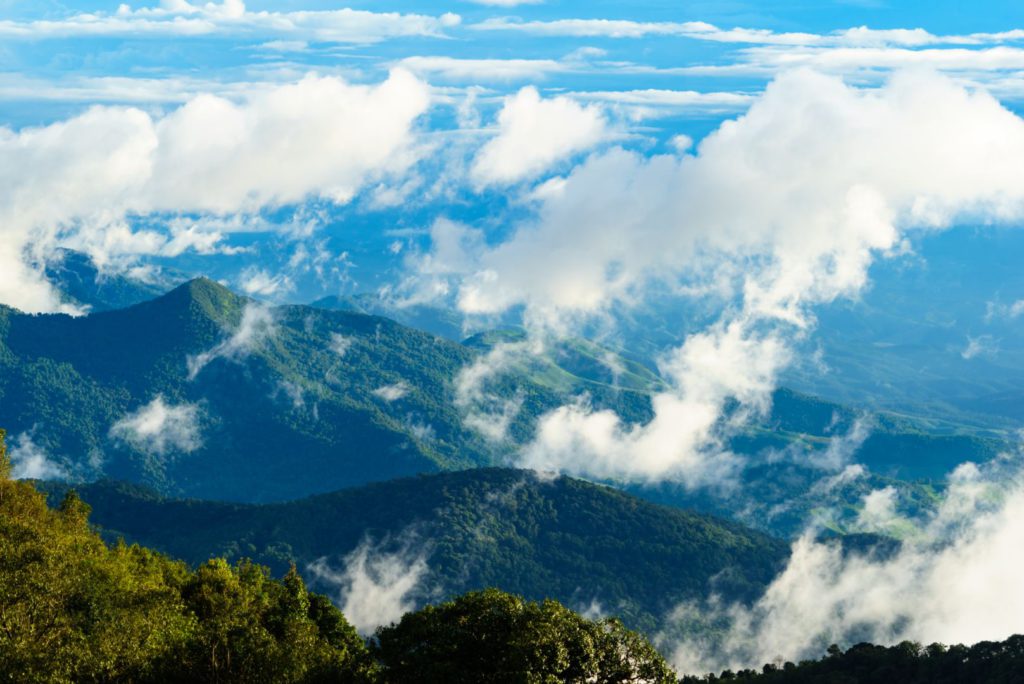
What’s so good about Chiang Mai
Chiang Mai was always popular with the locals. Thai natives love to visit Chiang Mai for the opportunity to spend time in the mountainous regions up north. It is the choice of destination for a respite from the heat and a chance to enjoy cooler weather, which in Thailand is rare.
But it has especially been popular with digital nomads in recent years. Chiang Mai is far cheaper than Bangkok in the cost of living. And it has all the glitz and glamour for a fun night out. As the expat community grew, there came better cafes and shared workspaces. It became a backpacker’s paradise. But in a twist of events, expats suddenly vanished and tourism fell. The reason for that is a matter of long discussion.
Traveling to Thailand? Here are 101 Things To Do In Thailand From My Bucket List
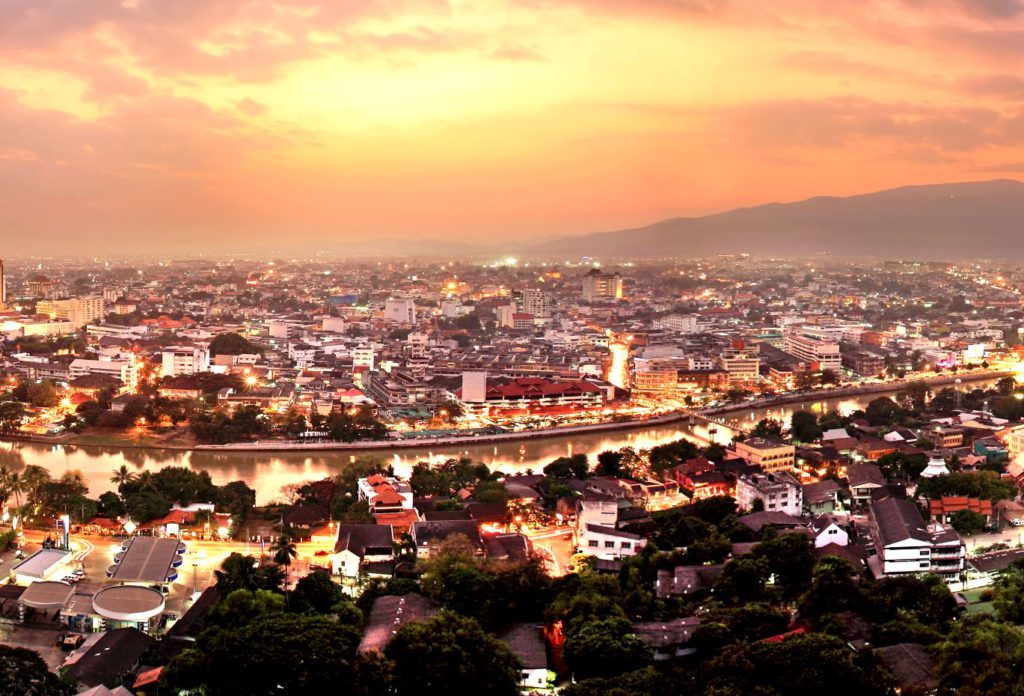
Best time to visit Chiang Mai
As I said earlier, the weather is very crucial to your visit to Chiang Mai. Good timing will give you sweet memories; a bad one may suffocate you.
Best time (December – January): The best, the absolute best time is the peak winter season. FYI, there are no winters in Thailand. But the last two weeks of December and the first two in January are the coolest. The temperature drops to around 18⁰C in other parts of Thailand and 14⁰C in Chiang Mai. It can drop further to 4⁰C or less in the hills around Chiang Mai. Keep that in mind if you plan to camp outdoors.
October, November, and February: These are the next best months after the peak ones. The weather is still mild and enjoyable. The days are not that humid and rainfalls are occasional. Nevertheless, you should be prepared for surprise showers. Mid-days are warmer as well.
Bad time (March and April): Contrary to what’s on the internet, these are the worst months to visit Chiang Mai. March and April are dry and hottest in Thailand. Plus a new season of harvest results in raging forest fires almost every year around Chiang Mai. This creates a suffocating cloud of smoke over the whole city and air quality drops to dangerous levels. Most flights are cancelled. Avoid travelling during this time.
May – September: This is not a bad time to visit but the heat can be overwhelming. Rainfall starts in mid-May that brings occasional respite. But it also pushes up the humidity. If rainfall doesn’t dampen your outdoor plans, the humidity may do. You can choose to spend time indoors during mid-day and come out only early morning and late afternoon. Limited tourist crowd results in great offers by hotels and tour operators.
Festive time in Chiang Mai: While Songkran is celebrated with a lot of enthusiasm; think it through since it falls in the middle of April. However, Loi Krathong is another festival celebrated with a lot of glamour in Chiang Mai. Loi Krathong coincides with the local Lanna festival of Yi Peng. This is the one with hundreds of lanterns floating in the sky.
If you want to witness this, it lies in the last week of October or the first week of November. Check beforehand since the dates shift. Also read our complete guide on celebrating Loy Krathong in Thailand.
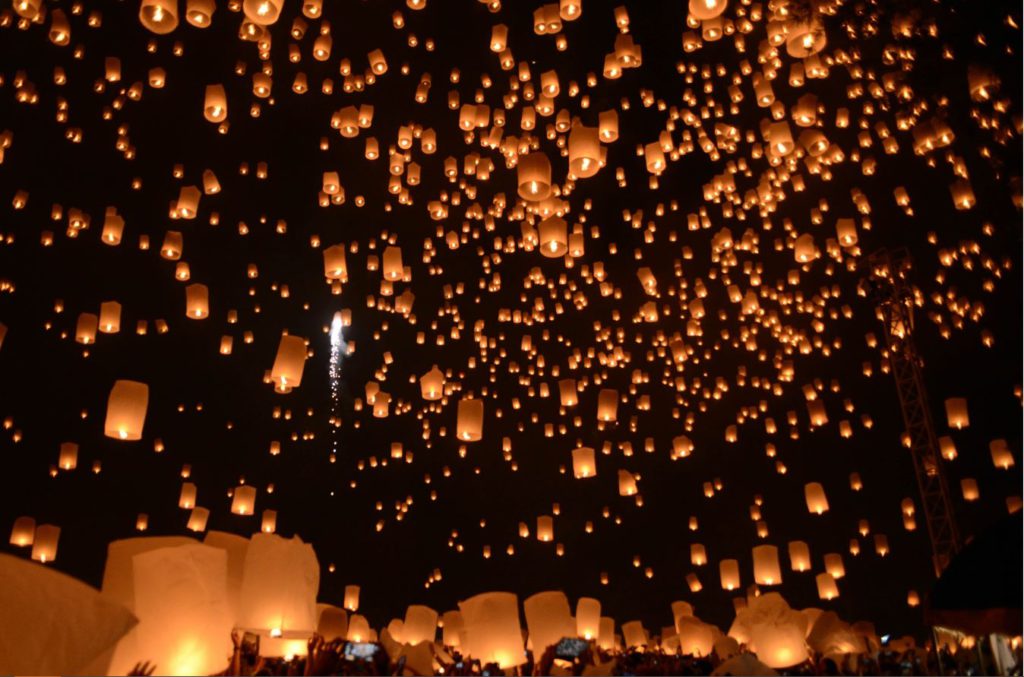
How to reach Chiang Mai
You can use the following to reach Chiang Mai:
Flights: Chiang Mai has a convenient and operational International airport. If you are travelling from inside Thailand, the flight tickets are extremely affordable if you book in advance. The airport also connects a few international destinations in Singapore, China, Taiwan, Myanmar, and Laos. The airport is just 5 km outside the city centre and you can take a taxi (USD 5), an airport bus, a songthaew or a tuk-tuk to reach the city.
Bus: I find overnight buses the best option if you are travelling inside Thailand. In fact, you can also take a cross-border bus to and from Myanmar and Laos. Most modern buses are equipped with comfortable reclining seats, a blanket, and a pillow. Many of them also have a built-in toilet. If you travelling long distances, they provide snacks on board and have a simple paid meal at a stop. You can book a bus in Thailand via busonlineticket, 12goasia or Bookaway.com
Train: However limited, there is still connectivity from Bangkok to Chiang Mai by train. It is a comfortable way to travel. You can book a sleeper berth all for yourself or even a whole compartment for your family. The downside is that the travel time is slightly longer and costs almost double of what you would pay for the bus. There are five direct trains from Bangkok including an overnight train. You can check the schedule on seat61.com and book tickets on thairailwayticket.com (official website)
How to go around in Chiang Mai
To go around in Chiang Mai pick on or combination of these options:
Private cab: Most convenient and affordable option in Thailand, cabs are great. You can just wave at one on the street or book one on Grab app (like Uber). If you take one from the streets, make sure the meter is on and starts at zero. Prefer to pay by cash. Don’t connect international credit or debit cards with the app or you pay extra for currency conversion. Cabs are very safe in Thailand but don’t get into unnecessary arguments, even if you are right.
Motorcycle taxis: These do great inside the city for single riders with light baggage. They are cheap and you can get one right across any street in the city. Just give them your destination (on a paper or google translate) and hop on for a ride. The cost is around 10THB per kilometre but that can vary of course (depending on your driver). Hold on tight though, these are not known for safety.
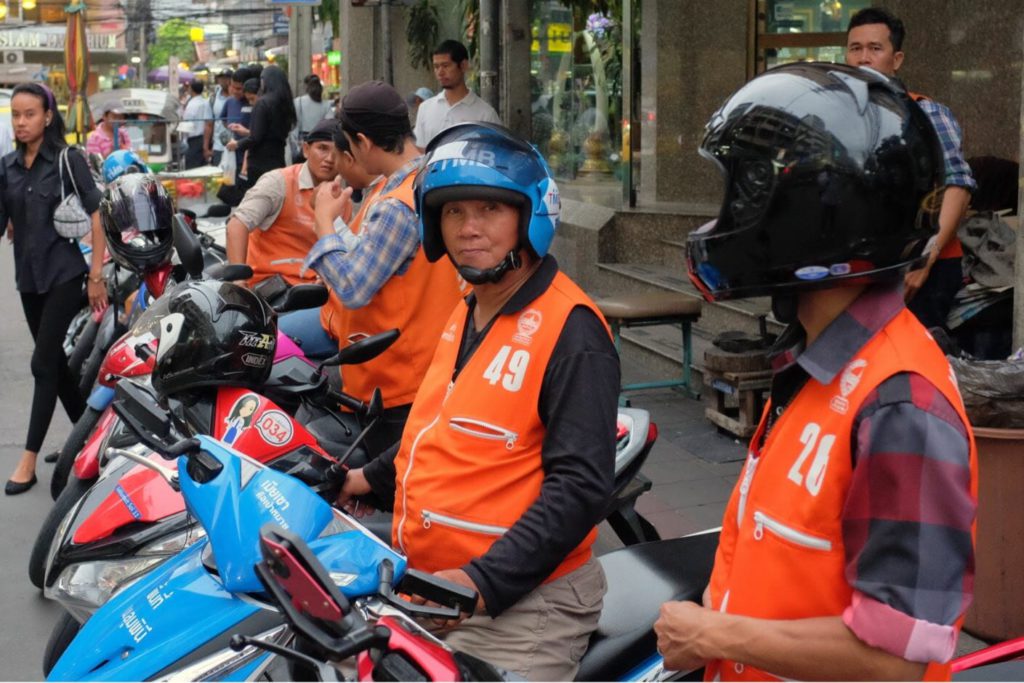
Two-wheeler rental: If you are comfortable driving on Asian roads and have solid travel and accidental insurance, this can be for you. Renting a two-wheeler gives you flexibility and is enough for 2 people. You can ask for one at your hotel or a motorcycle rental shop.
They may ask to keep your passport or security deposit. A day rent is around 250 THB depending upon the vehicle excluding fuel. You don’t necessarily need a driver’s license. Helmets are provided but are pretty much useless in terms of safety.
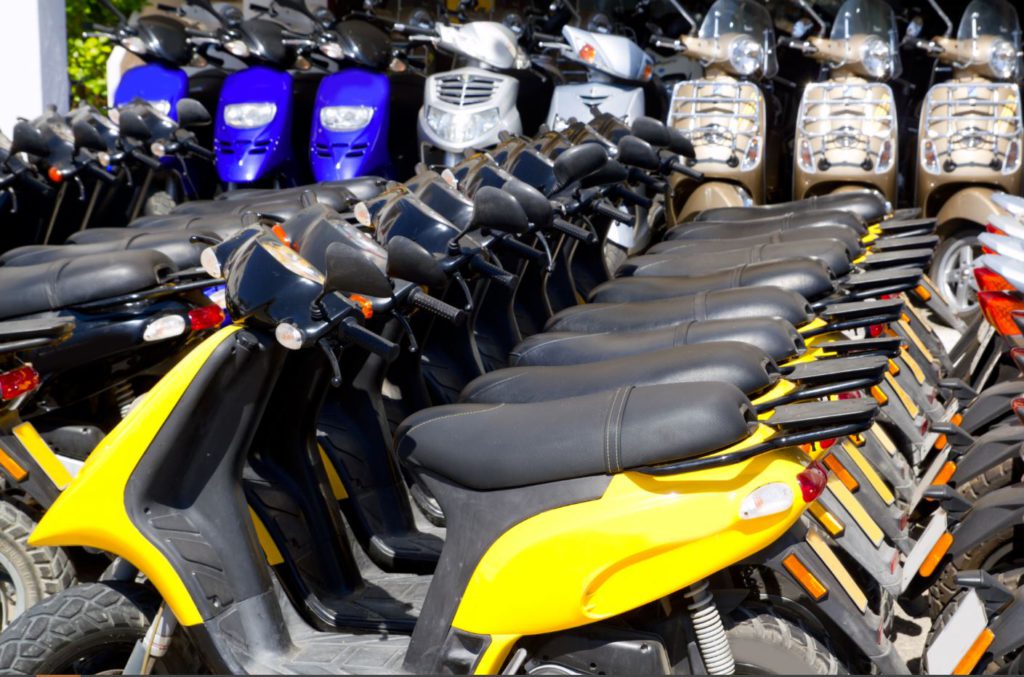
Songthaew: Songthaew are like minibus in Thailand. They go around in many routes picking up passengers and dropping them off on a single route. You just tell the driver your destination and if they nod, hop on. The only thing is that you need to keep a track of your destination and press a button intimating driver that you need to get off. Then pay the driver as much as he/she asks for. They usually ask for a fair price and can range between 20-50THB per person.
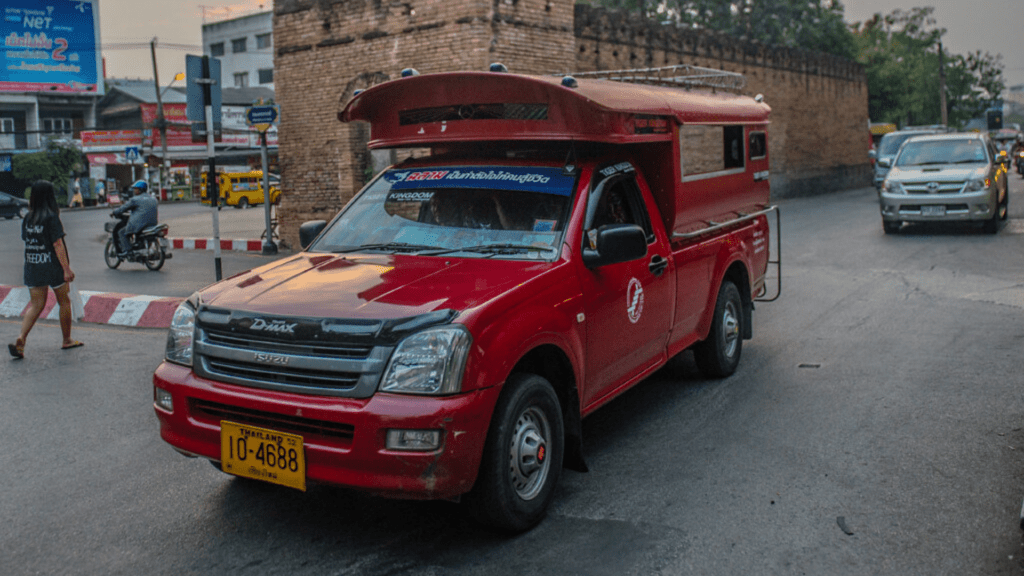
Tuk-tuk: Loud and fancy, you haven’t been to Thailand if you did not ride a tuk-tuk. These are good if you have a lot of luggage or if you just want a fun and convenient ride. The downside is that the price is quoted randomly by the driver and you will have to bargain well. Still, great for a personal ride.
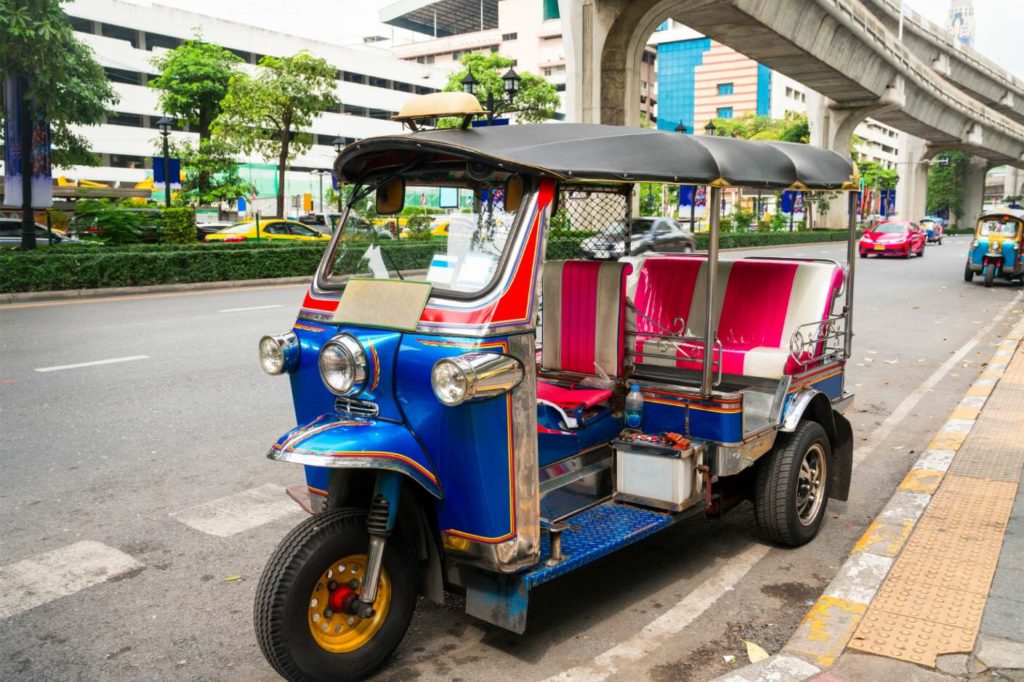
Day tour or Day Cab: If you don’t want to go through all the searching and navigation, just take a tour. I find it as good as anything else. Plus you get to chit-chat with a local guide. The only downside is that you may not get a company of your choice. We used them for day tours to places located far outside the city like Doi Inthanon. You can also hire a personal cab for a whole day for more convenience and flexibility.
There is also a bus network inside the city but rarely used by tourists. Read more about the Chiang Mai RTC City Bus.
Google Maps are often unreliable in Chiang Mai. Download local maps via maps.me that will direct you even when disconnected from the internet.
Where to stay in Chiang Mai
The best place to stay in Chiang Mai is the city centre inside the old city walls or somewhere near the south wall boundary. You will have access to most of the temples on foot or on a small ride. If you take a day trip from your hotel, the tour guides will be able to pick you up from the city. You can also find great restaurants and night markets within walking distance.
The next best places are in the villages. If you want to split your time, you can stay one day with the Hmong village tribes or camp up in Doi Inthanon which is usually a great experience. There are many other homestays in the nearby valleys but make sure you have a private vehicle for transportation. ,
Budget Hotels: De Charme Hotel , Gord Chiangmai , Moondragon Hotel Chiang Mai
Mid-Range Hotels: Villa Klang Wiang , Baan Klang Wiang Hotel , Rimping Village Hotel
Premium Luxury: Chala Number 6 , Rachamankha Hotel , Tamarind Village Hotel
Stay in the Countryside: Lhongkhao Samoeng , Phu Morinn Cafe&Camping , PAK RAM
There are several cool hostels in Chiang Mai that you can book for as low as USD 5 a night. Check out hostelworld.com for this. If you are looking for a budget hotel or want crazy discounts, I suggest you check out agoda.com. I personally use this everywhere in Southeast Asia.
Best Places to Visit in Chiang Mai
1. Visit Chiang Mai temples
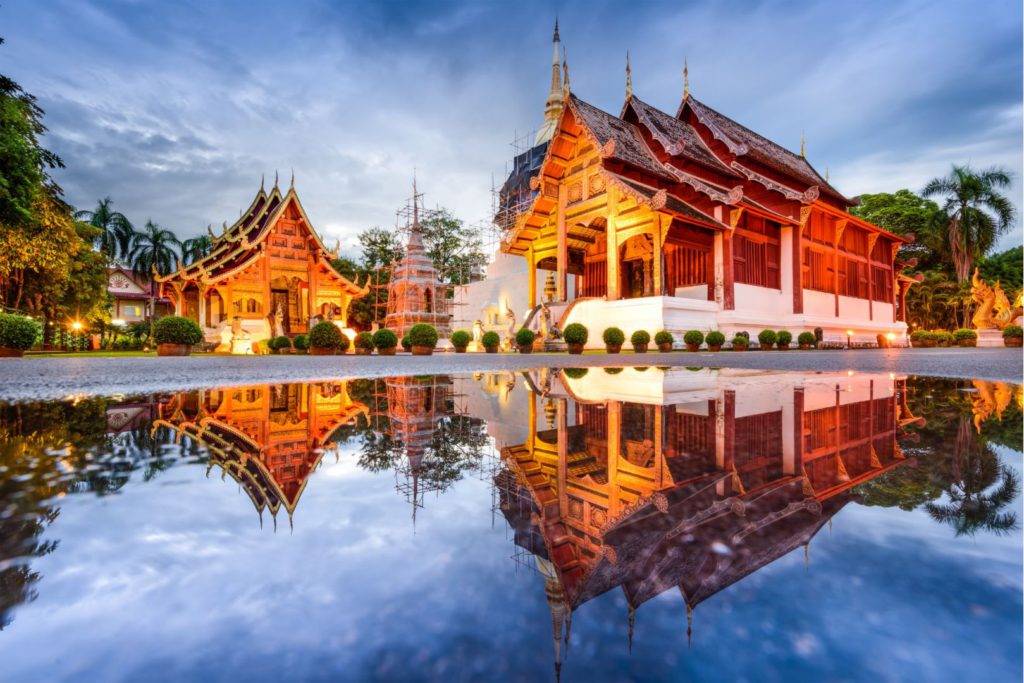
Chiang Mai has lovely temples. Maybe not as lavish as those in Bangkok, but still quite unique. And there are a lot of them. Most of the popular ones lie in the city center, also called as ‘old city’. You can visit all of them in an evening with the help of a ride. But if you have had your share of temples before coming to Chiang Mai, you can maybe visit one or two and leave the rest.
An extremely unique experience is the opportunity to talk to a monk about their lives. There are ‘monk chat’ programs across five temples in the city. The most popular is Wat Chedi Luang where you can catch a monk between 9 am and 6 pm on the north side of the temple grounds seated around a table. Just introduce yourself and express your wish to talk.
Some of the popular temples (linked to the location on Google maps) that you must visit are:
Wat Chedi Luang (Open from 6 am to 5 pm)
Wat Phra Singh (Open from 6 am to 5 pm)
Wat Suan Dok (Open from 6 am to 9 pm)
Wat Pra That Doi Kam (Open from 6 am to 6 pm)
Wat Sri Suphan (Open from 6 am to 6 pm)
Wat Chiang Man (Open from 8 am to 5 pm)
Wat Umong (Open from 6 am to 5 pm)
Wat Lok Molee (Open from 6 am to 5 pm)
If you want to read about some of these temples in-depth, refer to this article on 15 Jaw-dropping temples of Chiang Mai
2. Take a day tour of Doi Inthanon
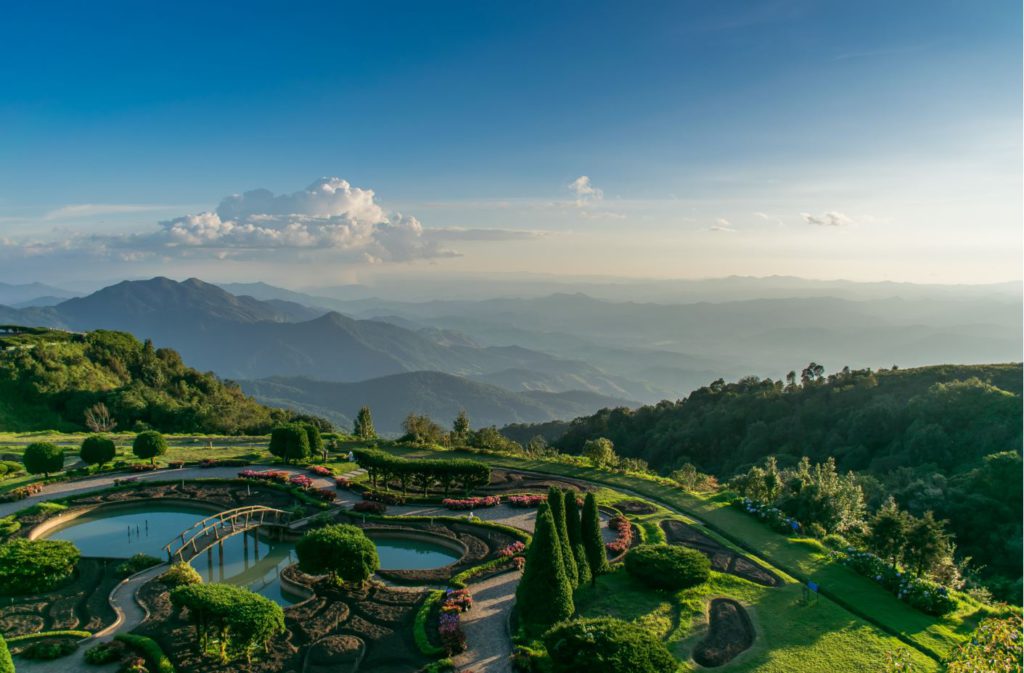
Doi Inthanon is the highest peak in Thailand. It is located at an hour’s drive from Chiang Mai city. But it is not just the peak that you go to see. There is a complete national park around it and has a lot of tourist attractions. There are waterfalls, temples, sanctuaries, Karen native hill tribe villages, gardens, and even a royal project that the late king set up for the benefit of the locals. It will take a whole day to see all of this, so prepare your itinerary accordingly.
As for me, this is a must-visit place. The day we went was the coldest day of the year and the temperature dropped to -1⁰C early morning. By mid-day, it was pleasant again with sunshine. If you love the outdoors, consider camping here. The park provides a tent with mats and has shops to eat in. We took a day tour with a local tour guide and it was very convenient. Make sure you take warm clothes with you when you go to visit.
Doi Inthanon timings: 6 am to 4.30 pm
Doi Inthanon ticket prices: It costs 300THB for foreign tourists and is free for Thai nationals to enter. If you are taking a personal vehicle, it costs an additional 30THB per vehicle.
How to reach Doi Inthanon: If you are doing only a day trip, the best way is to travel with a group day tour. They know the way, they pay all the fees, there is a simple meal included and a local Thai guide to talk to who tells you many stories. You can connect with a local travel agency mychiangmaitour for customized tours
Book tour Online: Doi Inthanon National Park Small Group Full Day Tour
You can also take a private taxi if there are more people in a group but is pricier. A day tour in a private cab will cost you a little less than 3000THB without the tickets.
But if you want more flexibility, you can also rent a two-wheeler or a car from the city. This lets you drive at your own pace. If you are looking to camp, this is a fantastic option. Tents and sleeping beds are available in the park itself. If you want something more comfortable, you can shell out a little more money with 3-star facilities or Glamping.
As for public transport, there are songthaews available from the city centre (yellow coloured) but tourists usually don’t use them. You will have to change them for another one at a junction. Also, since the park is so big you will need a vehicle inside the park. There is no public transport that runs inside the park. So unless you have a plan, don’t take a one-way transport.
Book a Tour to Doi Inthanon
You can also take a private taxi if there are more people in a group but is pricier. A day tour in a private cab will cost you a little less than 3000THB without the tickets.
But if you want more flexibility, you can also rent a two-wheeler or a car from the city. This lets you drive at your own pace. If you are looking to camp, this is a fantastic option. Tents and sleeping beds are available in the park itself. If you want something more comfortable, you can shell out a little more money with 3-star facilities or Glamping.
As for public transport, there are songthaews available from the city center (yellow colored) but tourists usually don’t use them. You will have to change them for another one at a junction. Also, since the park is so big that you will need a vehicle inside the park. There is no public transport that runs inside the park. So unless you have a plan, don’t take a one-way transport.
Related Article: How To Visit Doi Inthanon National Park, Chiang Mai
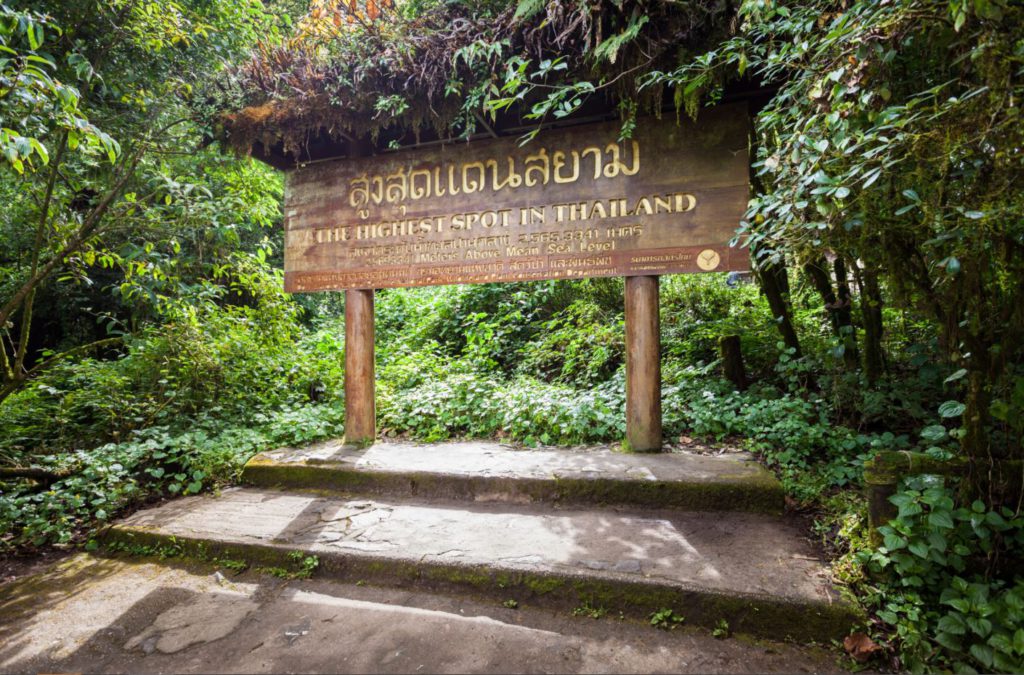
3. Wat Phra That Doi Suthep
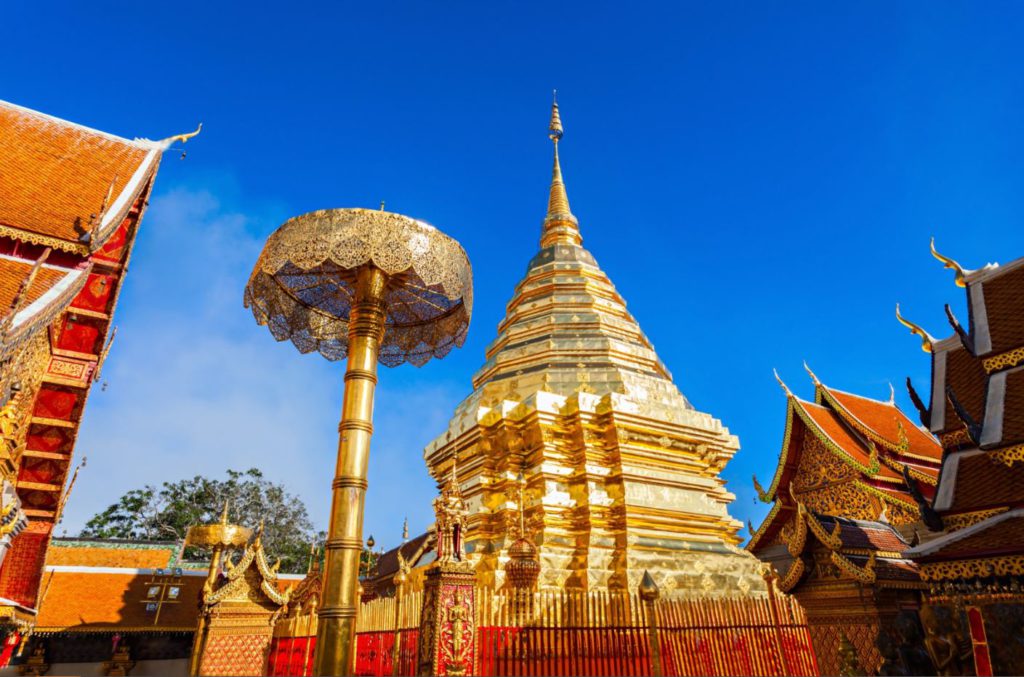
Wat Phra That Doi Suthep is one of the most important shrines of Theravada Buddhism. Pilgrims not only come far to visit from other parts of Thailand, but also from Laos, Myanmar, Singapore, China, and India. ‘Wat Phra That’ directly translates to ‘Temple of the Buddha Relic’. People believe that the temple is the home to the relic of a shoulder bone of Gautama Buddha himself. The first construction of the temple dates back to 1368.
In a summary of the legend, a monk by the name of Sumanathera dreamt of finding the bone in Pang Cha. He witnessed the bone with magical properties as it glowed, vanished and replicated itself. King Dhammaraja of Sukhothai, eager to see the bone threw a ceremony for the monk but found the relic underwhelming. He asked the monk to keep it.
But another king from the Lanna dynasty (present-day north Thailand) invited the monk. He strapped a part of the bone to the back of a white elephant and released him in the jungle. The elephant climbed Doi Suthep, trumpeted three times and dropped dead. The king perceived this as a sign and ordered to build a temple.
It was once a pilgrim’s journey to reach the temple. Today the temple is well connected with roads and public transport. The temple has evolved over time with pagodas and spires grander than the last one. Some wall scriptures depict the story of the white elephant and the boundaries beyond holds the view of surrounding valleys. The temple is free for all visitors.
Wat Phra That Doi Suthep timings: 6 am to 5 pm. Early morning hours are best to visit.
How to reach Wat Phra That Doi Suthep: You can ride the way with a rented two-wheeler or book a day cab or a group tour for the whole of Doi Suthep with other attractions.
If you are on a budget, you can hail a songthaew (red-coloured open bus) from Chang Pauk Gate in Chiang Mai. It will cost around 60THB for one way. You will find the same ones back.
If you are up for an adventure and physically fit for this, you can get a tour guide for a hike to the temple. Ranging between 3-6 hours of moderate hike, you will walk among bamboo forests accompanied by forest birds and waterfalls on the way.
Book a Tour to Doi Suthep
4. Doi Pui National park & the Hmong Village
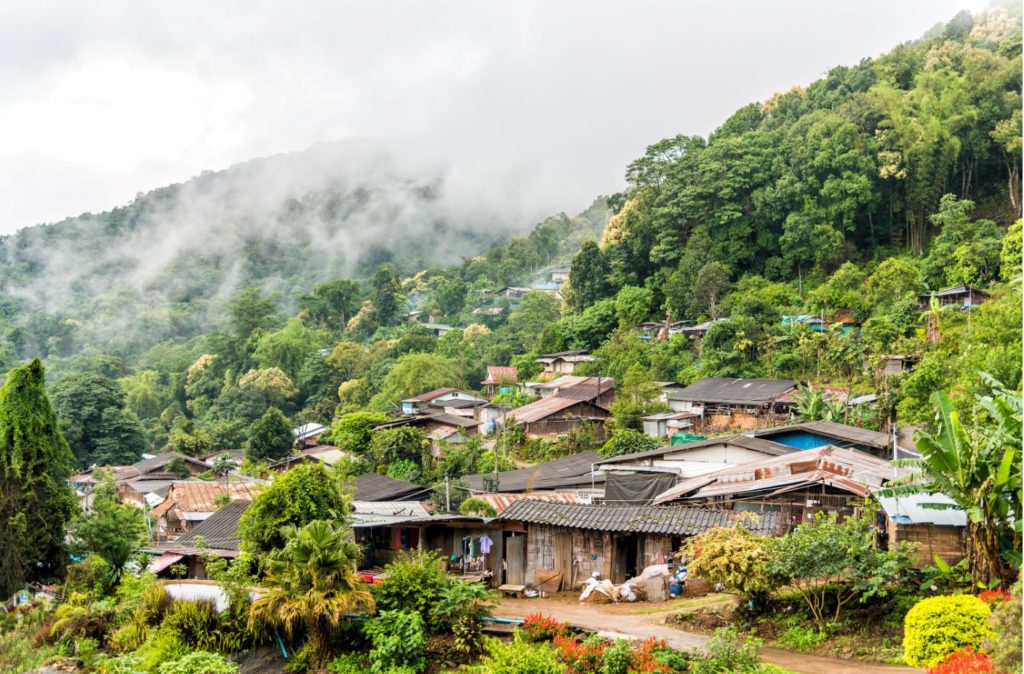
Doi Pui National Park is the highest point in Doi Suthep range. The park has various small waterfalls and rapids that eventually flow into other waterfalls inside Chang Mai. The forest cover is home to wild animals like pheasants, eagles, wild boars and macaque. The temperature is relatively cool, the air is pleasant and the place is usually shrouded by mist in the morning and evening hours. Wild garden beds filled with flowers take all the leftover spaces.
The most popular in the area is the Hmong village. This one is the most accessible of the many villages of the local Hmong tribes. Here, you can peek in their daily lives. It may even feel a bit intruding. The Hmong tribes originally came from across the Laotian border during political unrest.
They moved south for more arable land and started growing opium for livelihood. In 1963, the late king offered the tribe to cultivate lychee. Many households have lychee orchards today, but their tourism has grown to be a major source of income.
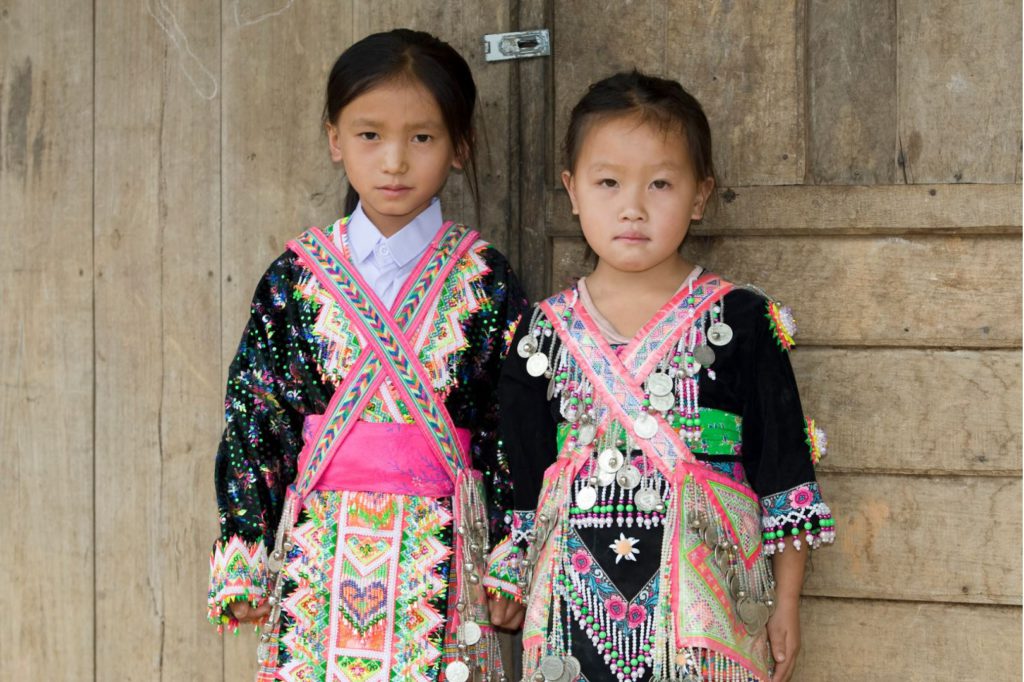
The people in the village tribes are deeply traditional and hold on to the values of their ancestors. Many youngsters go to the cities for further studies but decide to return to the village later on. Each community within have their musical instruments, god, beliefs, dressing style, festivals, and customs. The local market may look like a tourist center. If you decide to buy something, it will support the community.
In the village, you can hire kids or students for reasonable prices to show you around their village. Many doll-like girls adorn their traditional costumes and call out to take a photograph with. It may feel unethical at first, but understand that it does feed their family. There are also small waterfalls, a museum, gardens and poppy plantations if you want to spend some time exploring around.
Timings of Doi Pui: Some of the places like major waterfalls and campsites are open from 8 am to 4 pm. Other areas are free to enter at all times. However, if not necessary, avoid wandering in the area after sunset.
Ticket Price to enter Doi Pui: Tickets to some waterfalls and important sites are 100/50THB for foreign adults/children.
How to reach Doi Pui and Hmong village: You can take a day tour from Chiang Mai City to the whole of Doi Suthep with many tourist attractions on a private or a group tour.
Book a Tour to a Hmong Village
If you are comfortable riding on mountainous roads, rent a two-wheeler. (It was an enjoyable ride for us). It can get cold though. Do not ride after sunset.
You can also do the whole of Doi Suthep by Songthaews. Take one from city centre to Wat Pra Doi Suthep. From there change another to Bhubing Palace. Change the last on to Doi Pui. It is also the cheapest mode for solo travellers.
For more information refer to thainationalparks.com
5. Bhubing Palace
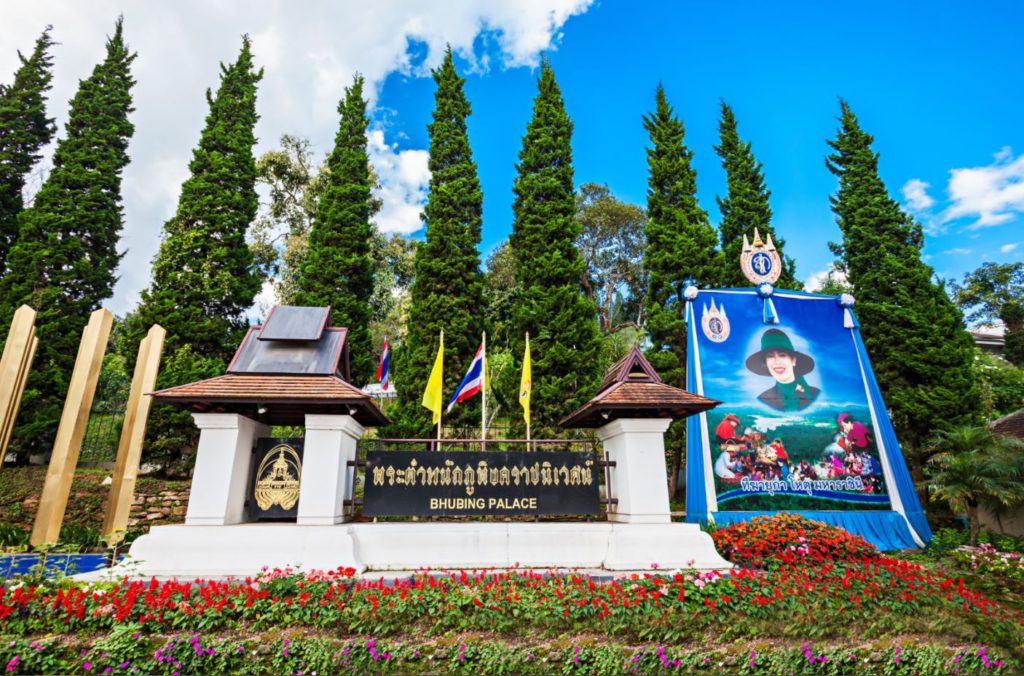
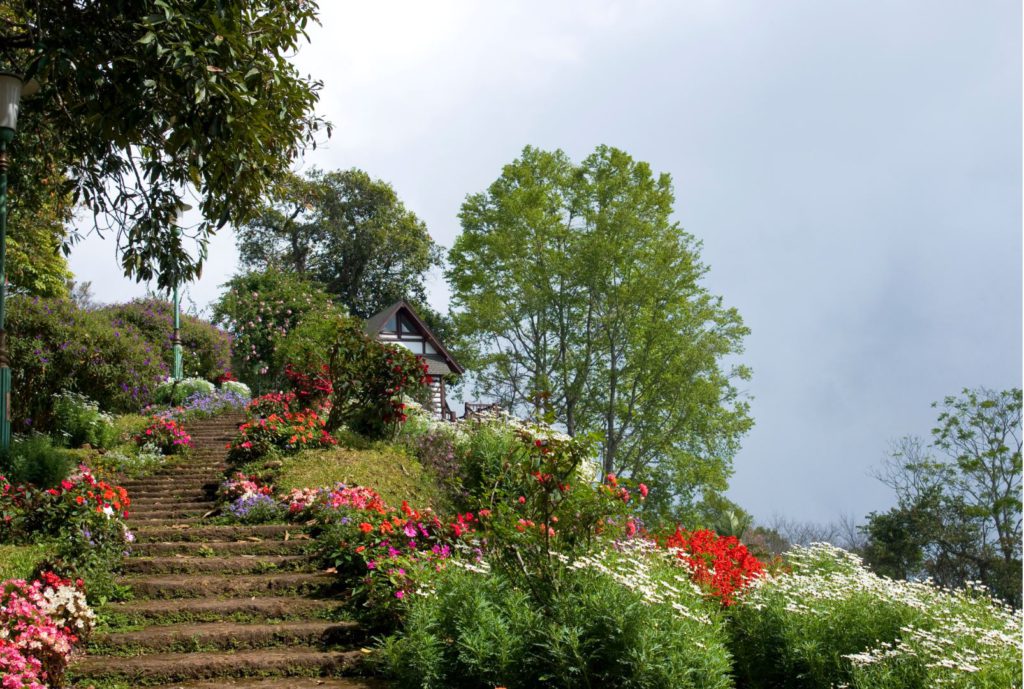
Bhubing palace was made for the royal family of Thailand for when they visit Chiang Mai. The palace has a set of buildings made in traditional Thai style with huge gardens and ponds filled with fishes. The palace is open to public when the royal family isn’t residing there. I will not say that it is must visit since most of the building are not accessible. But the gardens are lovely and if you are anyway on Doi Suthep by your own means, making a stop isn’t a bad idea.
Bhubing Palace timings: 8.30 am to 3.30 pm every day of the week
Bhubing Palace ticket price: 50THB for foreign tourists, 20THB for Thai nationals and 10 THB for children.
How to reach Bhubing palace: You can take a songthaew from Chiang Mai and change at Wat Pra That Doi Suthep for another one. Or you can simply keep driving if you are on your own. Not all day tours include Bhubing Palace in their itineraries.
6. Chiang Mai Night Markets
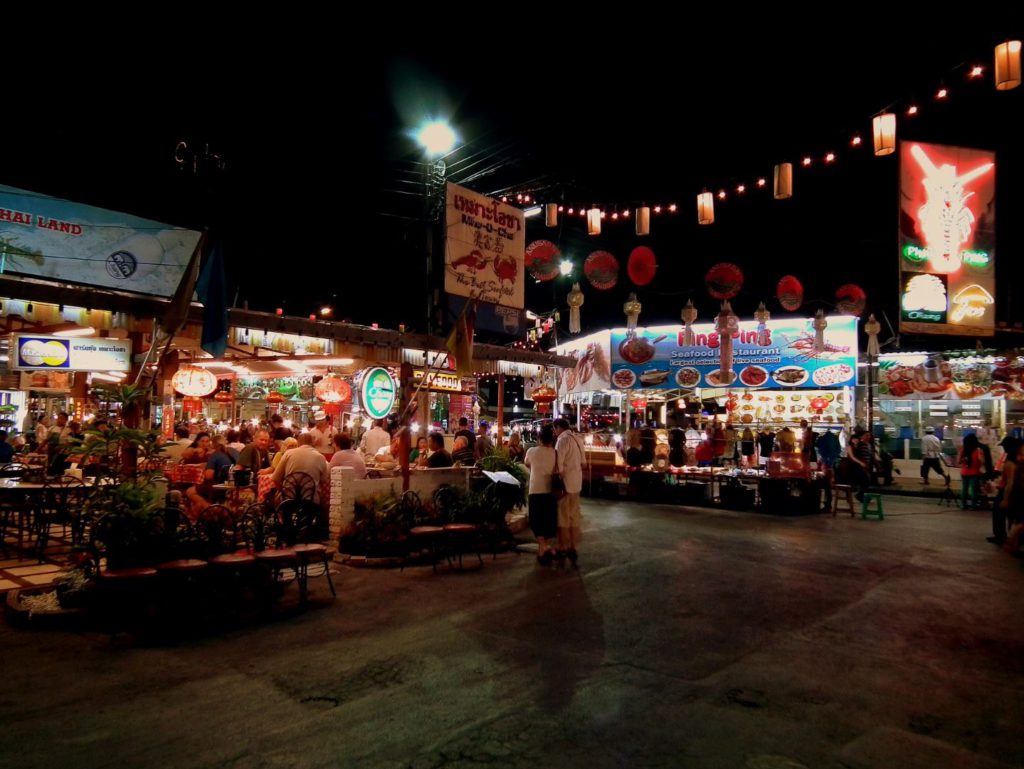
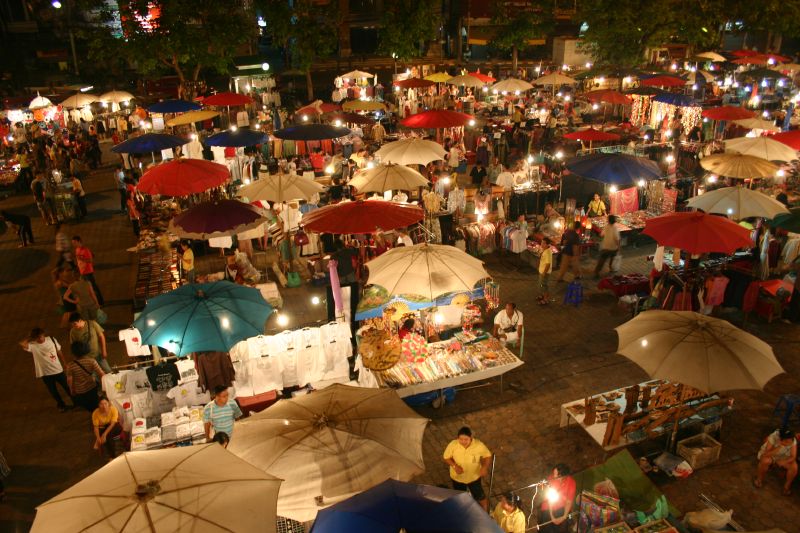
Chiang Mai is filled with night markets. Not only at the assigned spaces, temporary stalls pop up all over the main city. You can walk around the streets and enter into one of the compounds where you will see lines of food stalls, singing, traditional dancing and even live Muay Thai (Thai style boxing). These ones are great for a relaxed evening.
There are also special markets during the weekend – the Saturday and Sunday market. But boy, they can be crowded! Most tourists go for the food and have a look at the local handicraft. Suit your taste. Here are some options (linked to location on Google Maps)
Chiang Mai Night Bazaar: Open from 5 pm to 12 am every day of the week
Warorot Market: 4 am to 6 pm every day of the week
Saturday Night Market: 4 pm to 11 pm, opens only on Saturdays
Sunday Night Market: 5 pm to 10 pm, opens only on Sunday
Ploen Ruedee Night Market: 6 pm to 12 am from Monday to Saturday. Closed on Sundays.
7. Huay Kaew Waterfall
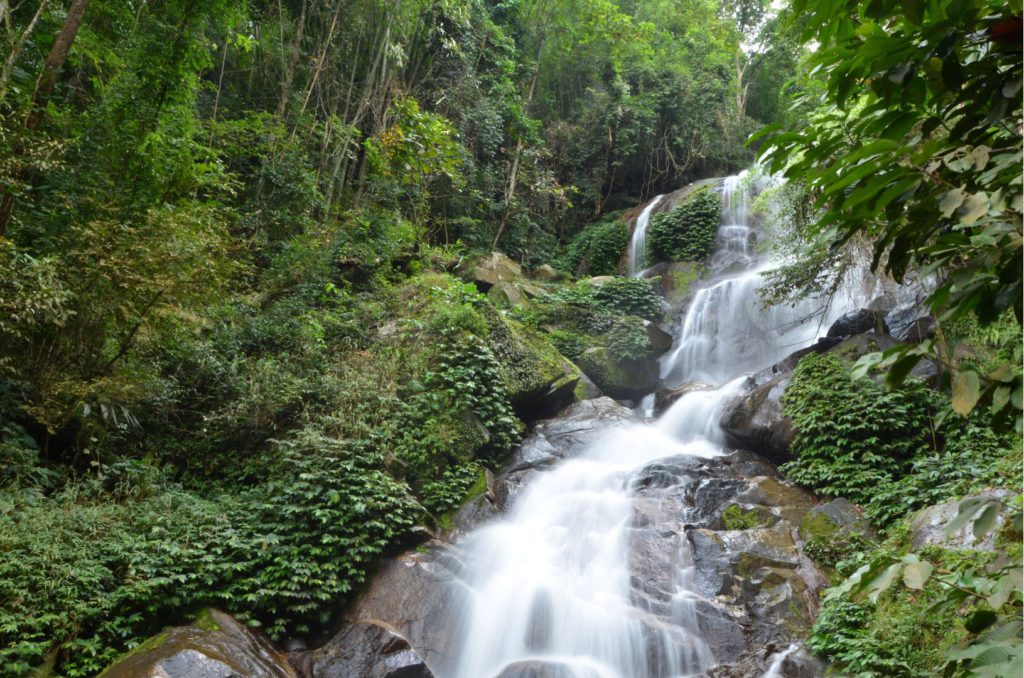
Huay Kaew is the most popular waterfall inside Chiang Mai city. They are easily accessible and you will find many locals with families and picnic baskets. Apart from the main waterfall there are natural pools around the bottom area. If you fancy a shower, get a change of clothes. The water is cold in the months of December and January. But otherwise, very comfortable to soak in.
It may come across as disappointing during the dry months of February – May. The waterfall comes fully alive during the rainy season. There is a jungle trail that starts here and goes up to Wang Bua Ban Viewpoint. But if you are sick of visiting waterfalls by this time, you can still skip this. You can get food and snacks at the many small restaurants outside the waterfalls. The waterfalls are free to visit.
Huay Kaew waterfalls timings: 8 am to 5 pm every day to the week
How to reach Huay Kaew waterfalls: Since they are located around the city, you can take a day cab (Call a grab) or hire a tuk-tuk for the ride.
8. Royal Park Rajapurek
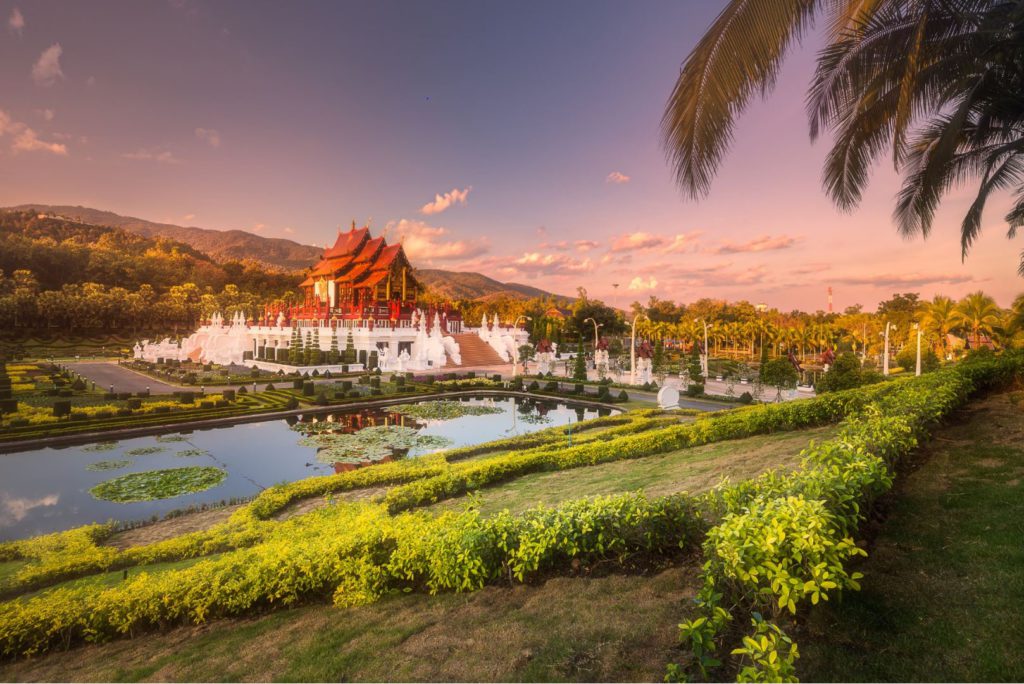
Royal Park Rajapurek is a park and botanical gardens built to celebrate the Late King Bhumibol’s 60th anniversary of his accession to the throne. It also coincided closely with his 80th birthday. The sheer size of the park leaves the visitor’s eyes wide. Each blade of grass is mowed, all topiaries are neatly trimmed.
The surrounding area of the park is used by groups of joggers out in the morning and evenings. Inside the park building, are the narratives of various projects undertaken by the late King. Pictures depict the royal agricultural projects focussing on a hybrid variety of rice seeds, dairy farms, biodiesel, fisheries and rainwater harvesting.
Soil conservation, elevating farmer’s life with education, forest conservation are other topics on display. Every year farmers and agriculturists come together to discuss best farming practices.
The park is divided into different zones. There is a tropical garden with diverse plants and flowers native only to Thailand. The greenhouses have herbs and desert plants on display. An international section has flowers from 24 nations around the world. The gardens are in their full bloom during the winter months between December and February.
Royal Park Rajapurek timings: 9 am to 6 pm every day of the week
Royal Park Rajapurek ticket price: 200/150THB for Adults/Children. Trams are available to move around the park for 20/10THB for Adults/Children.
How to reach Royal Park Rajapurek: The Park is 12km outside Chiang Mai. You can take a cab from the city or a tuk-tuk from the main city. Transport back is usually available outside the park.
9. Monk’s Trail – Wat Pha Lat Hike
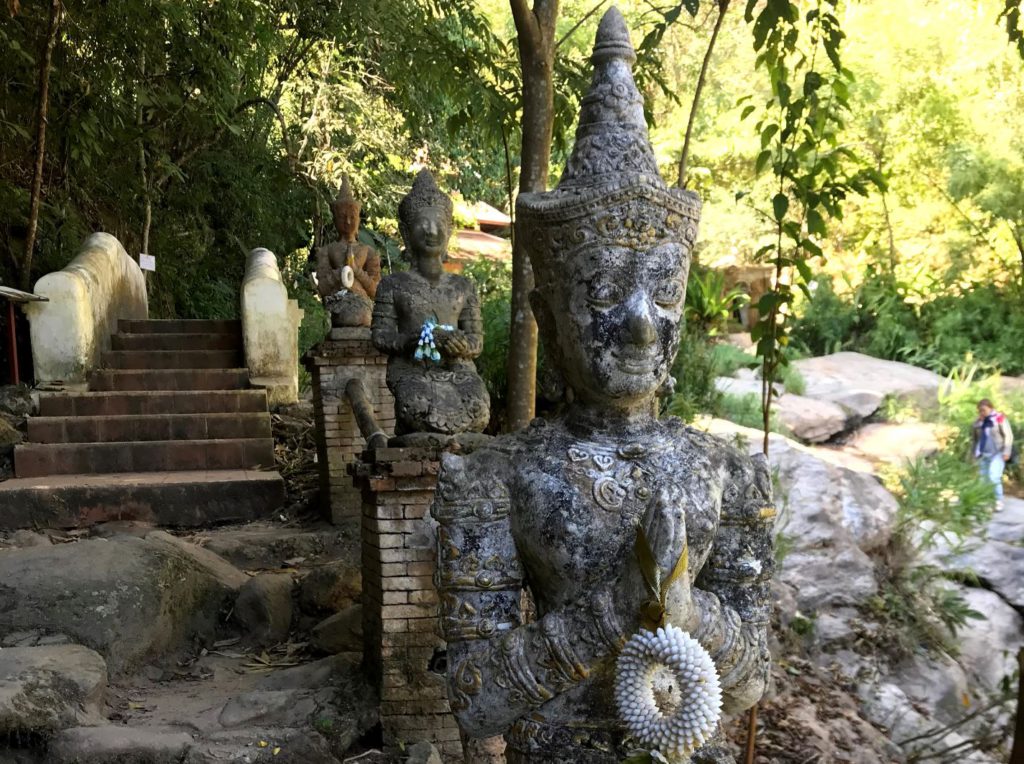
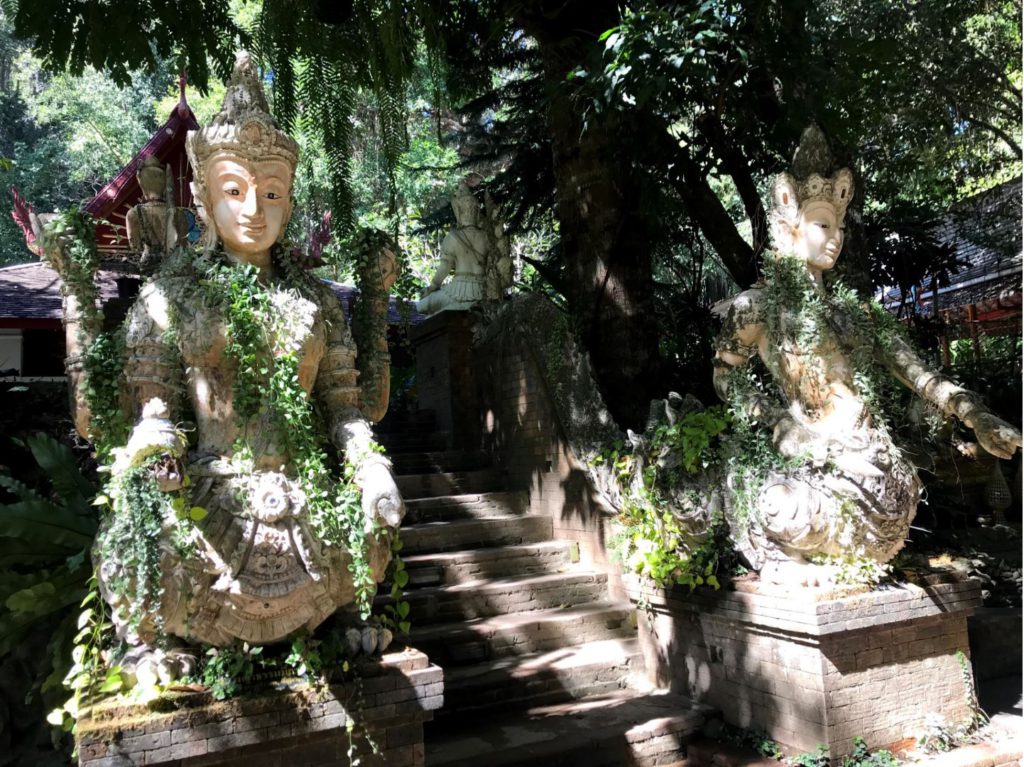
Monk’s trail is a great hike for outdoor lovers. It starts at a point that will make you wonder if you are at the right place. But as we started the hike, we saw fellow travellers going and returning back. The hike is moderate and mostly shaded by trees. The monk’s trail name is given due to the fact that monks embark on this walk during the early morning hours to the temple for their morning rituals.
After around 45 minutes, you will reach a temple complex with many small buildings put together. Some of the buildings were lost to the forest and even after reclamation, you will find them covered in foliage. We also found some people talking with monks in a separate session.
The view of the city from the top is lovely. But the funny thing that we realised is that you need not hike all the way through to get to the top. The temple is connected through a motorised road in Doi Suthep. So now, you know you have a choice. The temple premises are free to visit. Make sure your shoulders and legs are covered till knees.
Wat Pha Lat timings: There are no official timings to the temples. But morning hours are best for the hike before the heat seeps in.
How to reach Wat Pha Lat: You can, of course, take the Monk’s trail. You can start the trail here (google maps). If you don’t want to hike, you can take a songthaew from the city centre or drive to it in Doi Suthep.
10. Mae Ping River Cruise & Adventure Activities
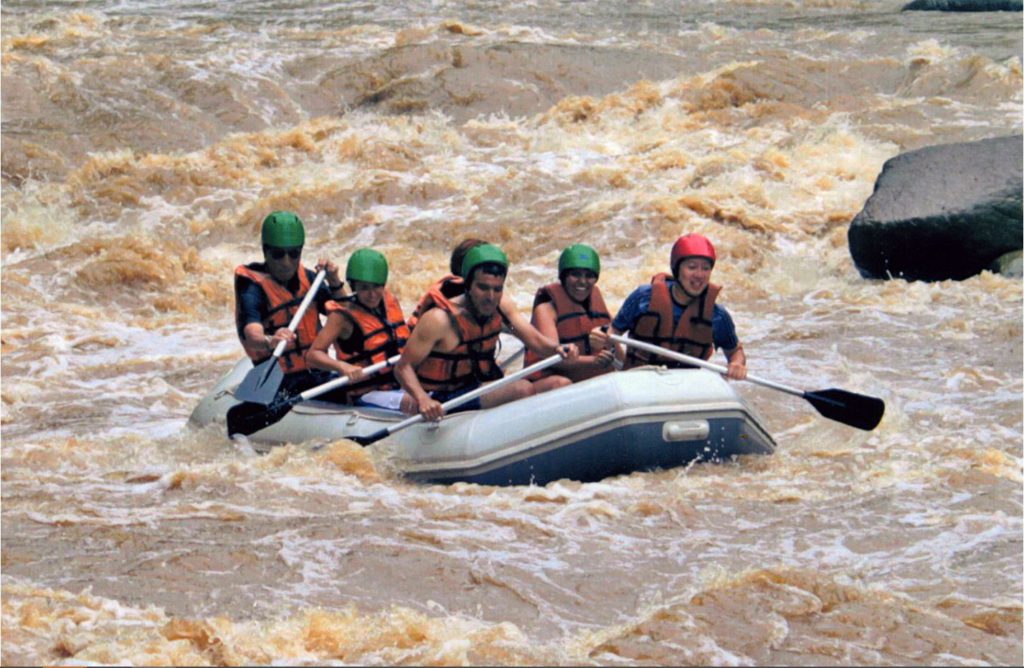
If you have a free evening, you can head out for a slow and serene bamboo cruise. Chiang Mai sits on the banks of river Mae Ping, a major tributary of Chao Phraya River (the river in Bangkok). The river wades through thick forests with muddy water supporting many families with food and agriculture.
I think it’s a lovely experience, especially in the evening. But you may not be able to enjoy the sunset since it closes down early in the evening. Contact a local tour agency for this.
In case, you would like a bit more adventure, you can up head north to Mae Thaeng jungles. The area is equipped for adventure activity on land and on the water. There are Chiang Dao caves at its north, hiking, jungle biking, paddle boarding, ATV rides and kayaking that is done with the help of local tour operators.
A 10-km stretch is the venue for white river rafting with experienced guides. Make sure you are equipped for traversing in the jungles with mosquito repellent a travel gear.
Book Adventure Activities in Chiang Mai
11. Thai Cooking Class
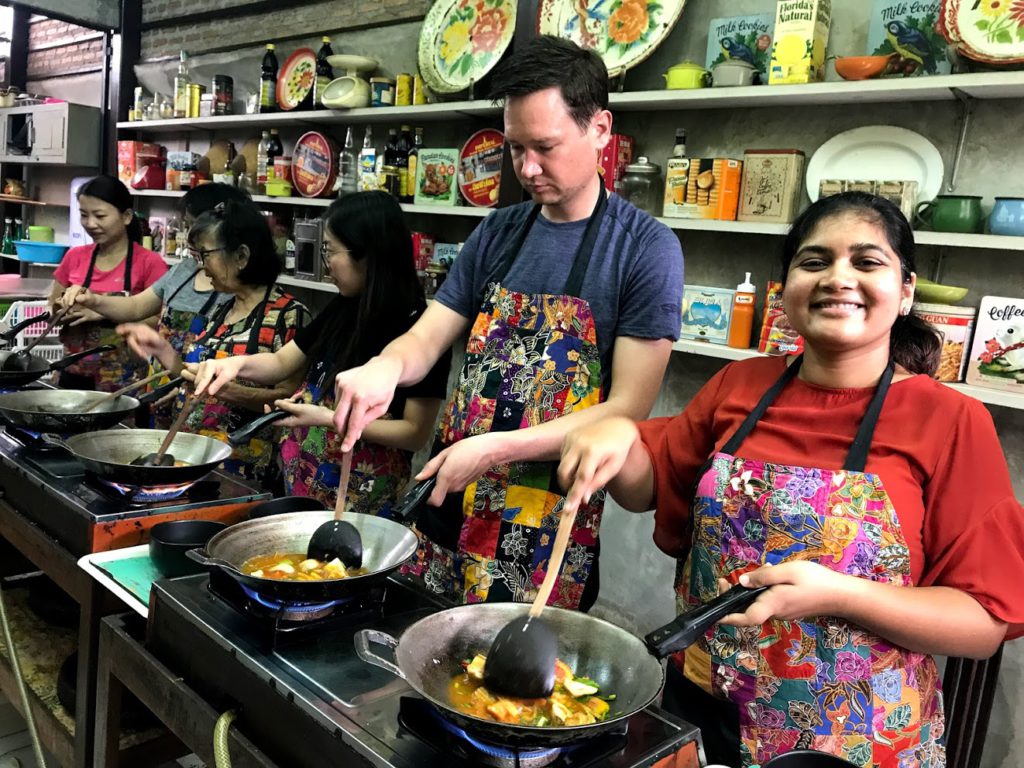
I took a Thai cooking class in Bangkok and I have to say I loved it. In fact, I attended it for 3 days and with different culinary menu each day. You may be surprised to know that the traditional cuisines are far different from what you find on the streets. And they mostly use ingredients native to Thailand and south-east Asia only. I don’t really enjoy cooking but it was a good experience to understand the ingredients involved in the local dishes that I eat every day.
The best part is that they usually take you to a local market and explain you the produce. Plus you get to eat at least 5 different dishes that you make that day. The teacher makes sure that they are delicious. I was pretty much stuffed up for the day.
If you are in Thailand for a while and are fond of cooking, you should attend this. The instructor makes sure it is fun and you also hands you a recipe book to take home. If you are vegetarian or vegan you can tell them ahead in time.
Related Article: Tales Of A Thai Cooking Class
Book a Thai Cooking Class in Chiang Mai
12. Bua Tong or Sticky Waterfall
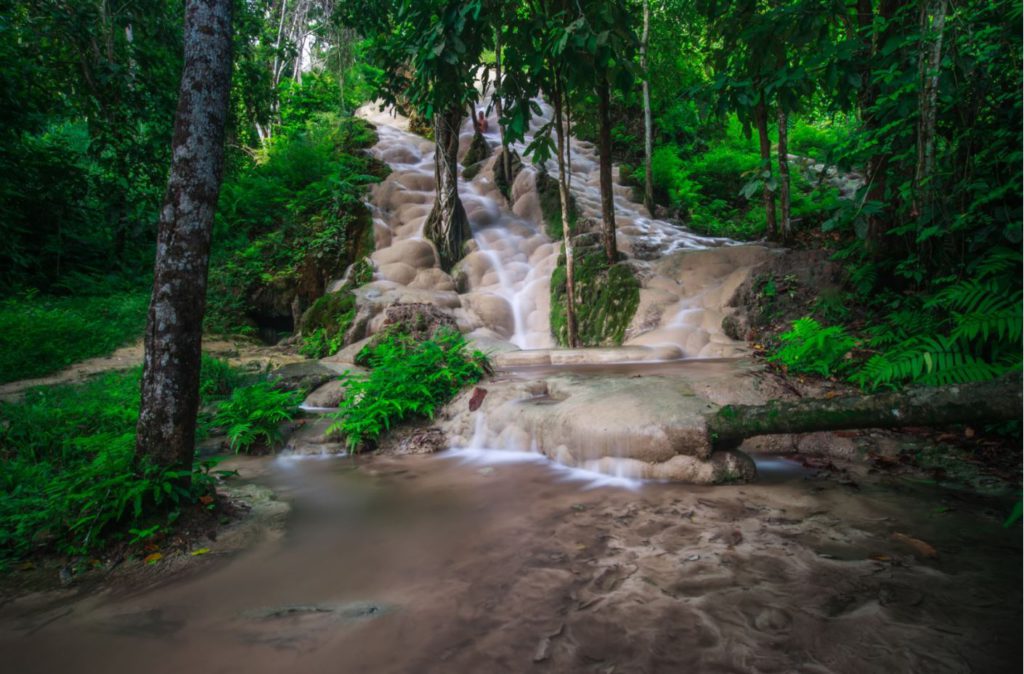
Bua Tong waterfalls hold a surprise for the visitors. You can actually climb up these waterfalls. The water that streams down is so rich in calcium that the deposits on the rock enable you to stand and even climb on the upstream. It is fairly popular with locals but not too much with foreign tourists since it is located around 60 km outside Chiang Mai.
The entrance has wide picnic spots that are filled with locals during the mid-day. There is a bathroom where you can change your clothes after a shower in the waterfall. You can also buy drinks and have a meal in the area with some small local shops.
If you do manage to make it all the way to the top, there is a small shrine that very few people visit. I will suggest you reach here very early in the morning and you may be able to enjoy the whole place just by yourself. There is no entrance fee.
Bua Tong waterfall timings: Open from 6 am to 6 pm every day of the week.
How to reach Bua Tong or sticky waterfalls: If you can, you can drive up to the waterfalls via a personal vehicle like a two-wheeler. You can negotiate with a taxi (cost for a return trip only to the waterfall will be around 1000THB). Include a couple of more attractions like Chiang Dao caves in the area for a full day. There is no public transport to this place. You can also choose to take a group tour for more convenience.
Book a day tour to Bua Tong or Sticky Waterfalls
13. Grand Canyon Waterpark
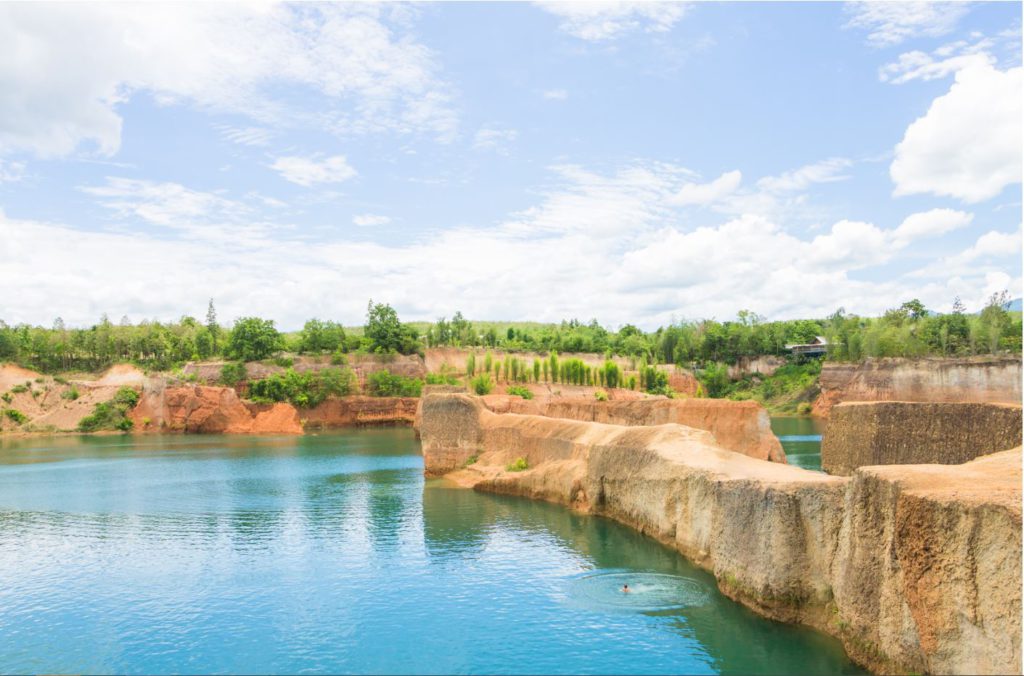
Grand Canyon is like a mini version of its American counterpart with water making its way through in the middle. It may not be as grand as original but it is fun for a lazy day and for the kids. You can jump off the cliffs directly into the water.
You need to make sure that you jump only at the safe spots, with an instructor if possible. Fatal accidents were reported in the past. If that’s too extreme for you, you can get a bamboo raft and glide lazily on the water. There is a restaurant nearby that serves fresh food.
It used to be more of a hidden gem at some point in time. Now it is far more touristy with an astronomical increase of entry price which I am not sure if is justified. Mid-day can get very hot, so the best time to visit is early morning. It is at a 45-minute drive from the city and the trip will probably take most part of your day.
Grand Canyon waterpark timings: 9 am to 6 pm every day of the week
Grand Canyon waterpark ticket prices: 450THB for foreign adults and 350THB children under 1.2m in height, 90THB for ones under 90cm. Additional 50THB for a renting a locker, 100THB as a safety deposit for the locker key.
How to reach Grand Canyon waterpark: Take a taxi from the city that costs around 600THB. You can take a return ride from the taxi stand outside the park.
One day trips around Chiang Mai
There are a few towns around Chiang Mai that call for attention. In my honest opinion, you must spend more than a day in these places. But if you are short on time and still want to check them out, you can take a full day trip with a tour operator. Group tours are quicker and more affordable than doing in on your own and wasting precious time weighing options.
Chiang Rai
Chiang Rai was the older capital of the Lanna dynasty (of north Thailand) before Chiang Mai. A smaller town than Chiang Mai, Chiang Rai still has many temples and tourist attractions. In fact, I feel that Chiang Rai has a certain artistic expression that is only unique to the place. The most famous of all is the white temple or Wat Rong Khun which is unbelievably detailed. Blue temple and the Black museums are also places that you must visit.
Chiang Rai is 4 hours from Chiang Mai. You can cover this by public bus or minivan. If you are planning to do this on your own read about the Places you must not miss in Chiang Rai.
Book a day tour to Chiang Rai: Chiang Rai Famous Temples Small Group Tour
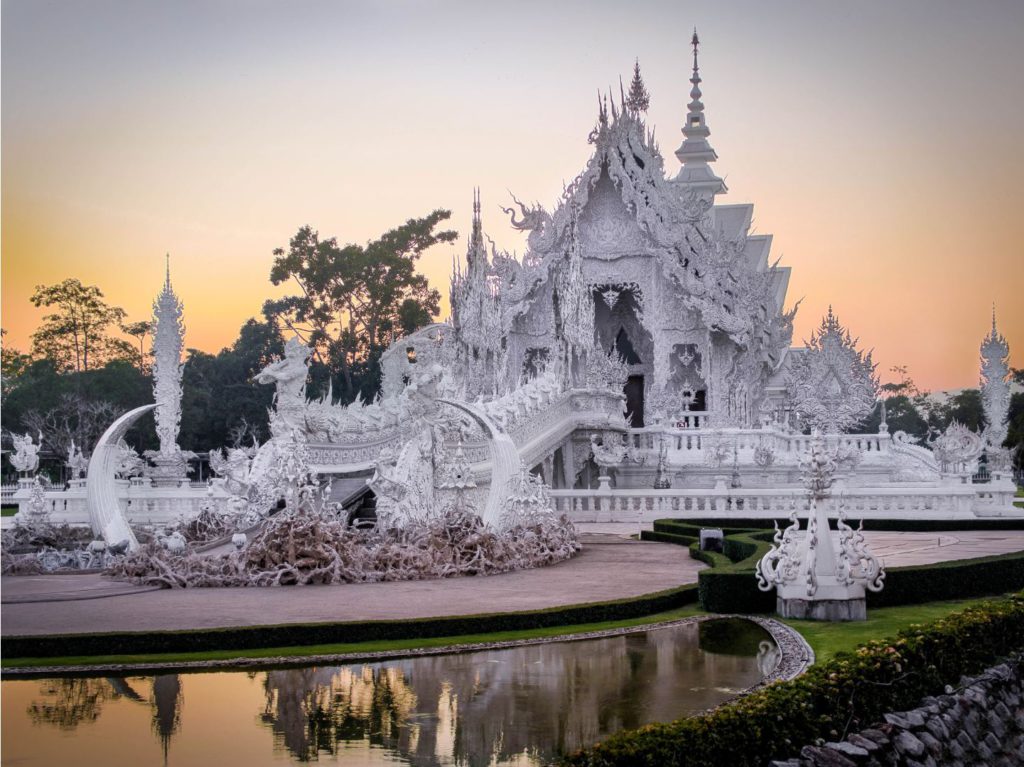
Book a day trip to Chiang Rai
Pai
Pai is a small insignificant town far up in the north of Thailand. The only way to reach Pai is by dangerously curvy roads and few take that trip. Pai is a backpacker’s paradise. It is just a little more than a village, quaint and very peaceful. Due to its growing popularity with foreign backpackers, locals now have opened up hostels, cafes, and a bustling night market. You can certainly do a day trip but it can be exhausting. Try and spend some time here if you can.
Related Article: A Thorough Handbook To Visiting Pai, Thailand
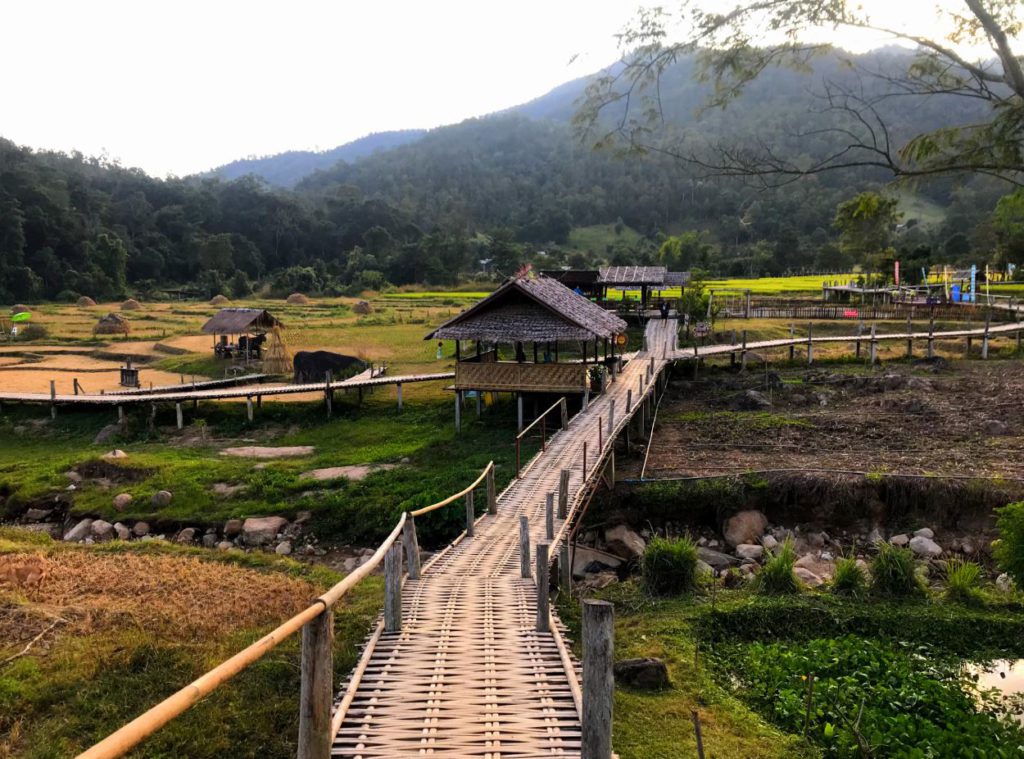
Book a day trip to Pai
Lampang
Lampang is another small town to the south of Chiang Mai around 2 hours by road. The town is popular for pagodas in traditional Lanna architecture. If you are making you way to Bangkok and have a lot of time, you can make a day stop here. There are daily night markets and national parks around the area frequented by tourists. If you can, make a detour to the floating pagoda, high up on the cliffs in the province of Lampang.
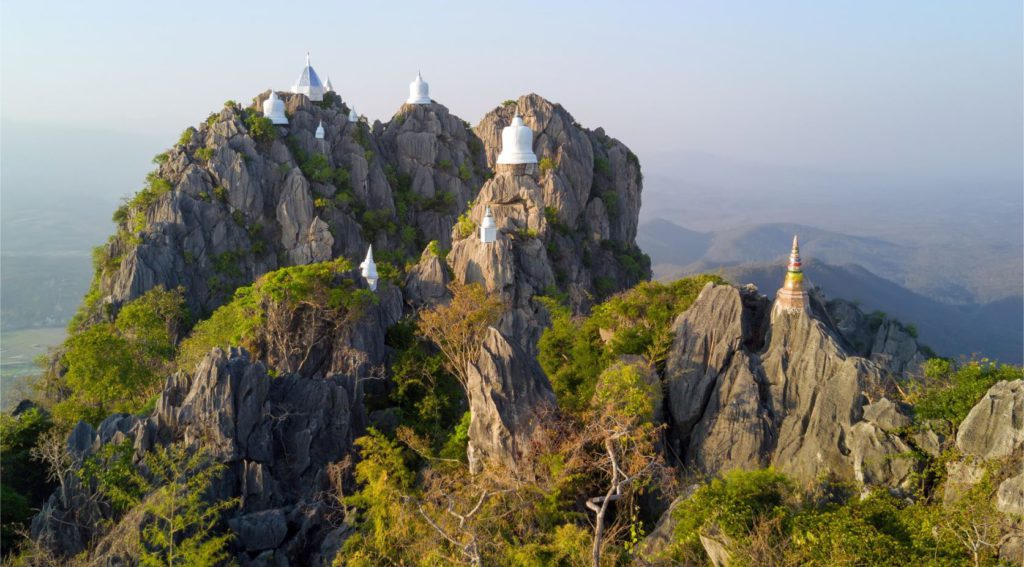
What not to do in Chiang Mai
While you are in Chiang Mai, you will find many opportunities to see wildlife in various forms. From night safari, Chiang Mai zoo and elephant sanctuaries, all of them are made for the purpose of tourism. No matter what people say, the animals are taken in captivity and made familiar with humans after years of training through suppression and torture techniques.
And while I cannot force my opinions, I urge you not to take part. The best way is to completely avoid visiting them. But if you absolutely want to see an elephant, you can choose Elephant Nature Park, in the north of Chiang Mai. They are treated relatively better there and you can pay as well as take care of the elephants while staying on the property. Avoid other elephant camps and tiger sanctuaries all together.
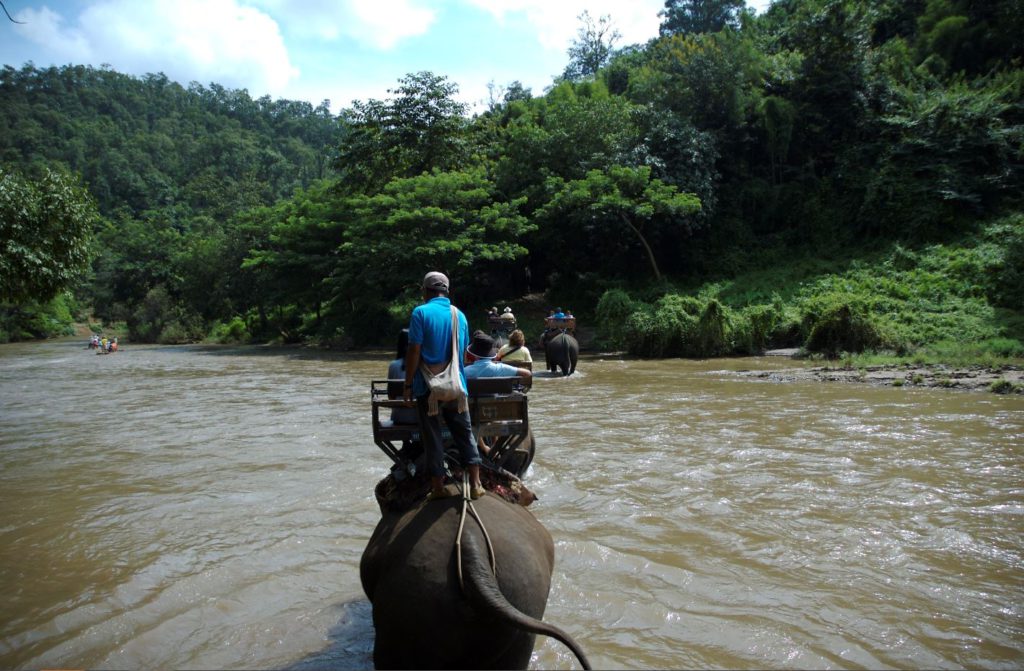
Save On Pinterest






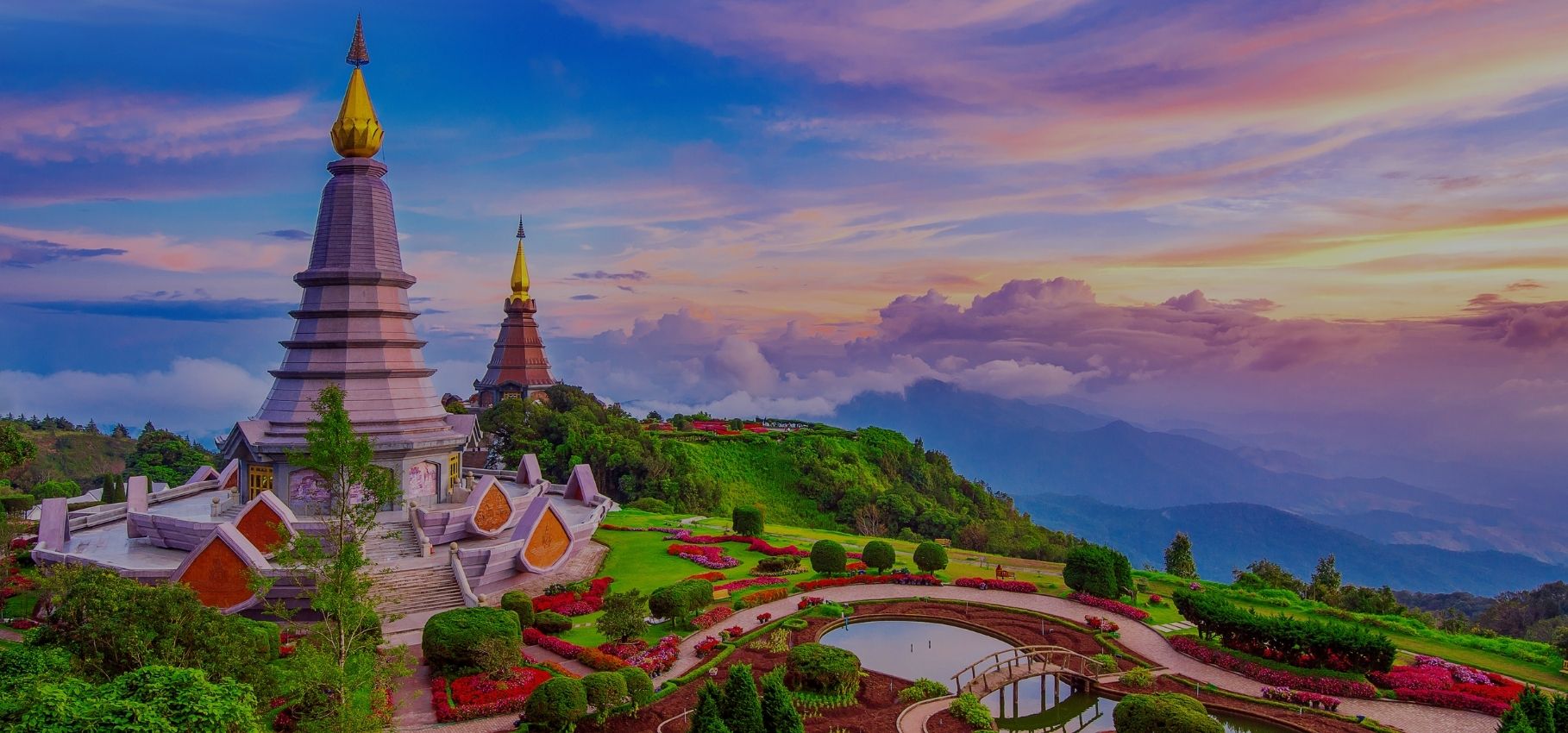
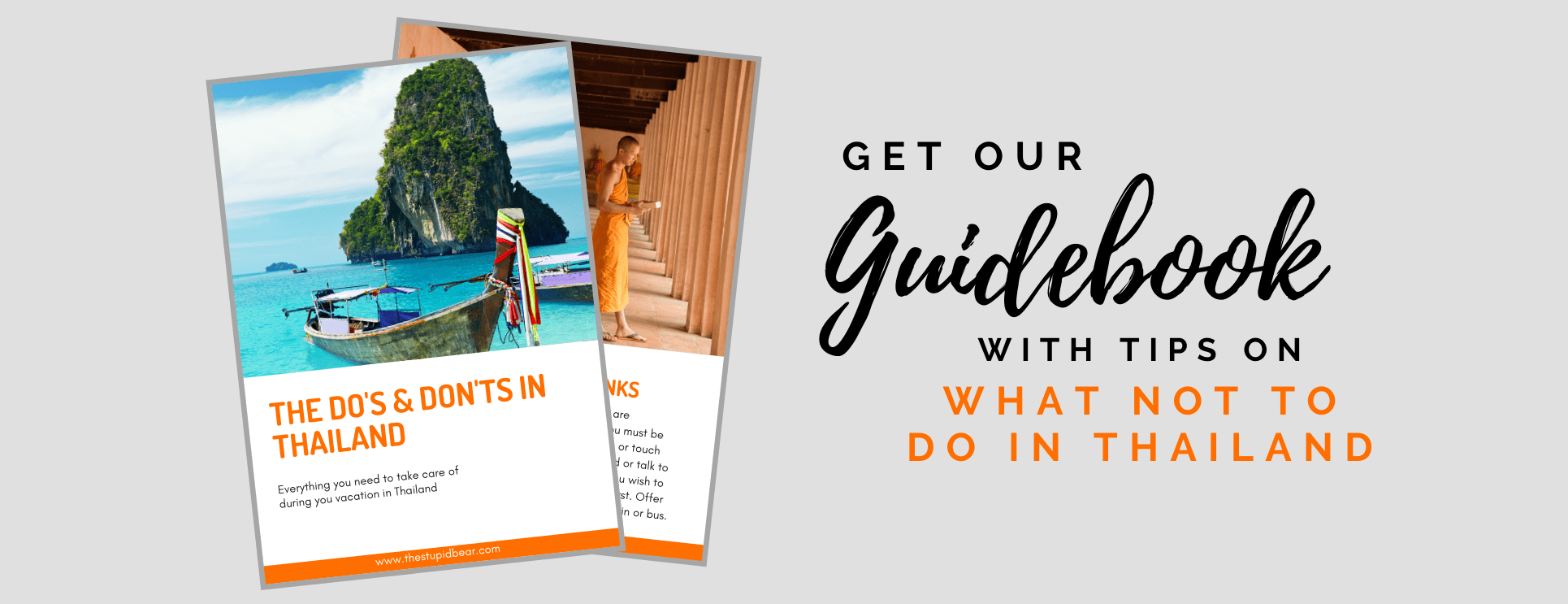
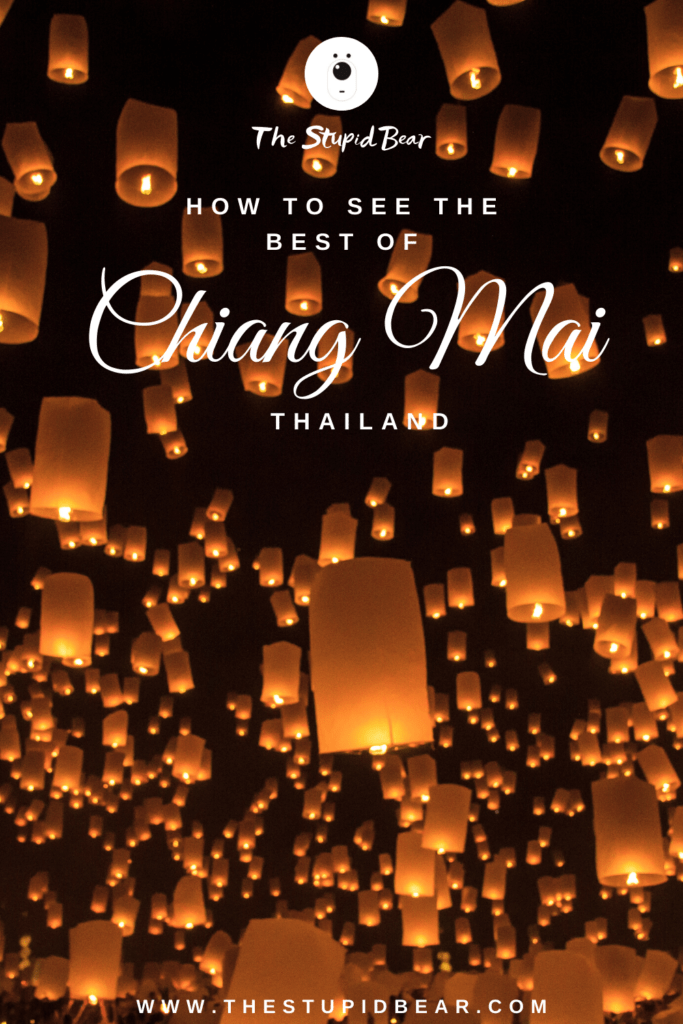
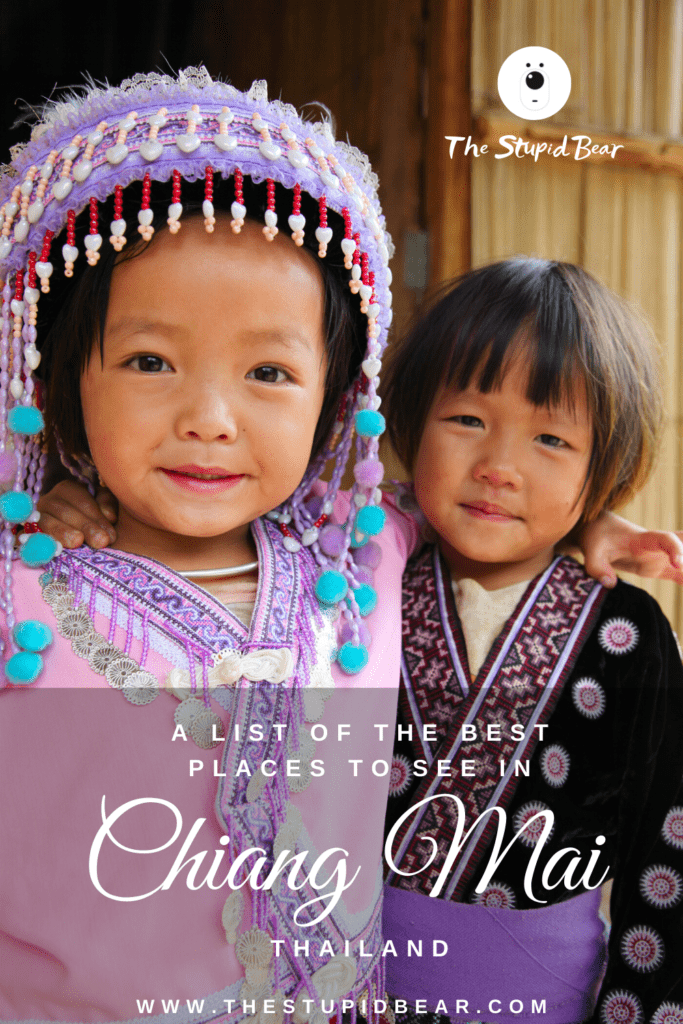
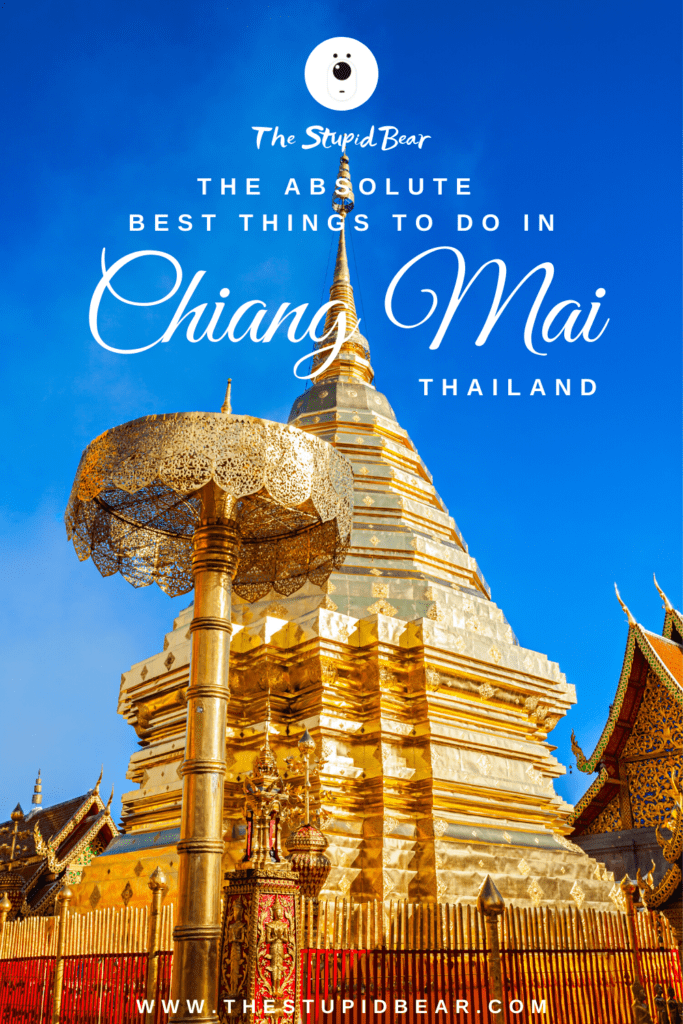
No Comments